TL;DR
Yes, 12–24-inch mulch volcanoes are harmful because they trap moisture against bark, invite rodents, and suffocate surface roots. The right approach is 2–4 inches of mulch, kept 3–6 inches off the trunk, broadened toward the drip line, and paired with breathable soil, restrained edging, and calibrated irrigation.
90% of tree roots live in the top 12–18 inches of soil: why shallow layers and airflow matter
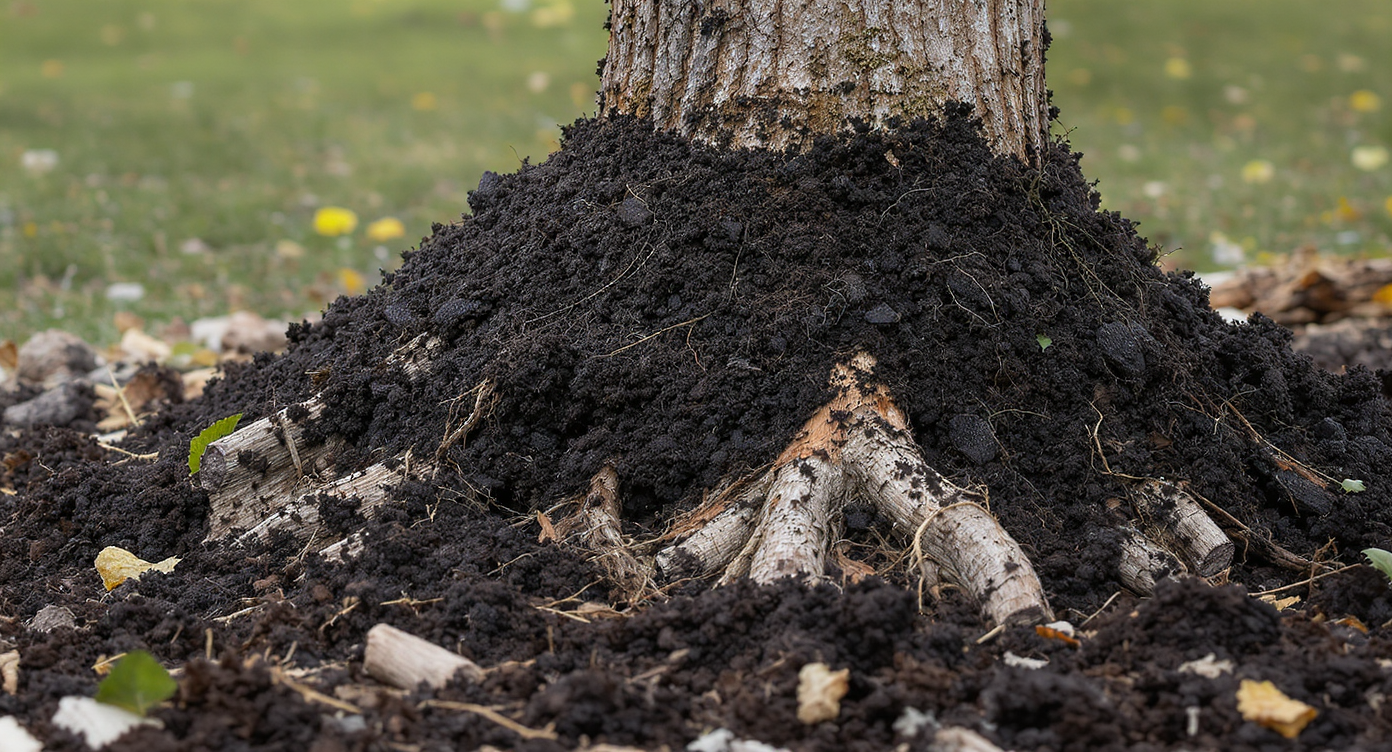
Mulch volcanoes harm trees by suffocating roots and inviting decay; better methods reveal the root flare.
Mulch volcanoes happen when landscaping crews stack 12–24 inches of material around trunks in the name of curb appeal. In plant health care, that much mulch suffocates, accelerates decay at the root flare, and lures rodents; over time, trees respond with adventitious and circling roots that destabilize them. Better landscaping and hardscaping design treats a tree as a living structure: you show the flare, feed the soil, and define a durable ring that protects from mowers and keeps water where roots can use it. Try your own exterior layout instantly on ReimagineHome.ai: https://www.reimaginehome.ai/?utm_source=blog
50–70% of low‑maintenance yard budgets go to hardscaping: why standards are changing
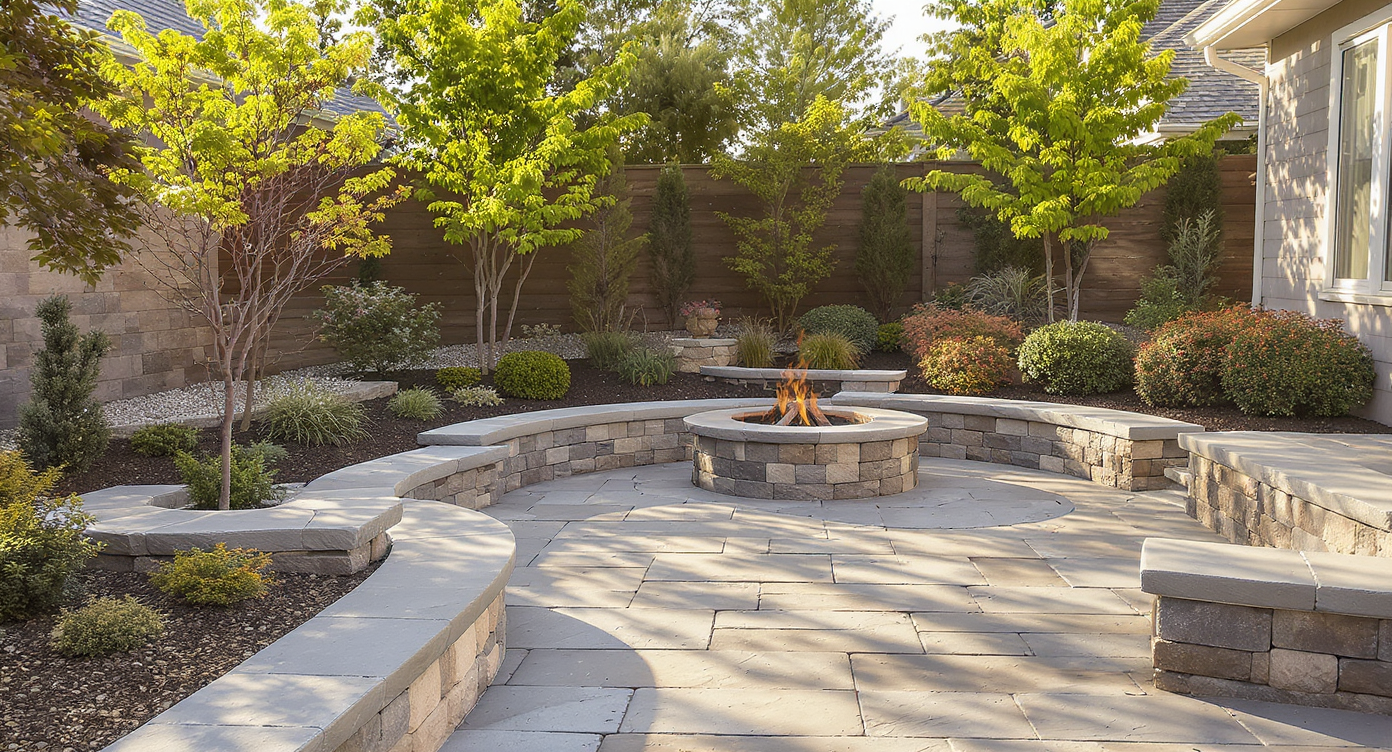
Extensive hardscaping dominates budgets, reducing upkeep while boosting durability and style.
As droughts, storms, and maintenance costs rise, homeowners want hardscaping design that lowers effort without sacrificing curb appeal. That’s why budgets now favor stone patios, steel edging, and stabilized gravel that frame planting beds and tree rings correctly. Three forces are driving the shift: - Maintenance math: Hardscape elements often make up 50–70% of a low-maintenance yard budget because they reduce weekly labor. - Tree health liability: A buried root flare can trigger decay within 1–3 years in wet climates; leaving a 3–6 inch trunk clearance helps prevent rot and vole damage. - Clarity at install: Property managers pay at the end of the job, so landscaping crews sometimes prioritize “looks today.” Smart specs create future-proof details that still look clean on day one. If you manage a townhouse, codify simple standards in the scope: 2–4 inches of mulch only, visible root flare, trunk kept bare, and a defined hard edge so crews can’t creep the pile back against the bark.
Anecdote
“We pulled back a foot of soggy mulch from a young bur oak, exposed the flare, and swapped in a crisp steel edge. By fall, the canopy filled in and the mower crew stopped chewing the bark.”
36–48 inches for main paths and 2700–3000 K lights: key landscaping & hardscaping trends now

Wide, well-lit pathways blend structure and warmth, highlighting current landscape trends.
Good garden design blends structured hardscaping with resilient planting, and the following rules help you avoid costly rework. Use them as a checklist for your backyard makeover, front yard design, or tree‑ring refresh. - 2–4 inches is the ideal mulch depth for trees: Any more can suffocate the topmost roots that exchange oxygen. Extend mulch laterally toward the drip line rather than upward against the trunk. - 3–6 inches of bare trunk reduces rot risk: Keep mulch and soil off the root flare; the flare should be visible and proud. - 36–48 inches is the comfort width for primary walkway ideas: If a tree ring intersects a path, widen the hardscape so you don’t shave the ring later. - Outdoor lighting looks best at 2700–3000 K: Warm light washes bark texture and layered planting without glare. - Privacy hedges take 3–5 years to mature: Use low walls, fences, or trellises as interim screening so you don’t overplant too close to trunks. - 6–8 feet is a healthy tree‑pit diameter for street or patio cutouts: It reduces compaction and keeps weed‑whackers off bark. - Stone patio joints at 1/8–1/4 inch with permeable setting beds: This lets stormwater filter to roots while giving you a modern, low‑maintenance hardscaping look. For inspiration, see modern landscaping ideas for small front yards and curb appeal upgrades in our guides: - Modern landscaping ideas for small front yards: https://www.reimaginehome.ai/blogs/ideas/modern-landscaping-ideas-small-front-yards?utm_source=blog - How to design low‑maintenance hardscaping: https://www.reimaginehome.ai/blogs/guides/low-maintenance-hardscaping-design?utm_source=blog - Front yard makeover ideas with stone and planting: https://www.reimaginehome.ai/blogs/ideas/front-yard-design-ideas?utm_source=blog
5 minutes to mock up rings, edges, and grades: using ReimagineHome.ai before you mulch
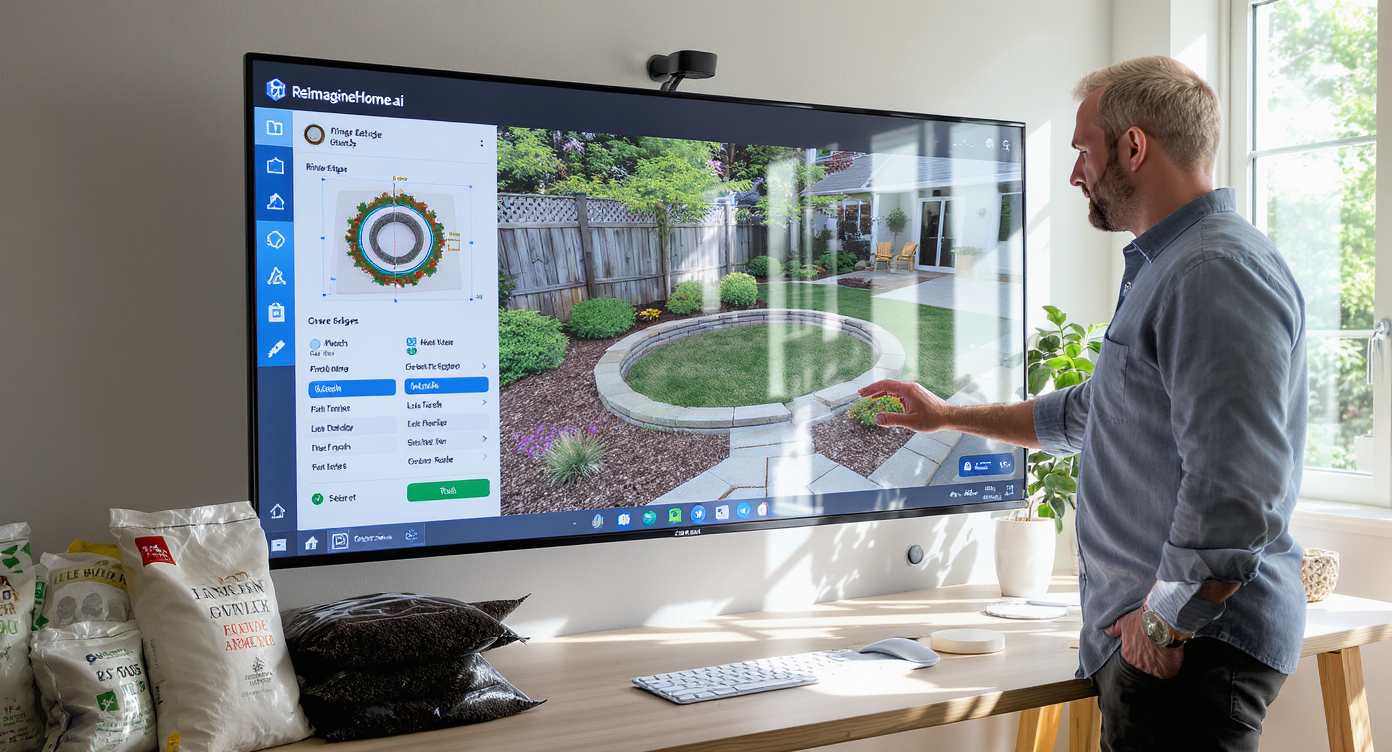
AI tools let homeowners design landscape details quickly before purchasing materials or hiring crews.
Before you hire a crew or buy mulch, use AI to test proportions, edges, and materials. ReimagineHome.ai lets you visualize stone patio borders, steel edging, mulch color, and ring diameters over your actual exterior. - Step 1 (2 photos, 1 minute): Upload your front yard or backyard and choose “exterior/landscaping.” - Step 2 (1–2 minutes): Add a circular or organic tree ring at 6–8 feet diameter; toggle 2–4 inches of dark hardwood mulch versus 3/8‑inch gravel for a low‑water look. - Step 3 (1 minute): Drop a 36–48 inch walkway and test curves that respect the root zone; preview outdoor lighting design at 2700–3000 K. - Step 4 (30 seconds): Export side‑by‑sides and a note that reads “keep trunk bare 3–6 inches; show root flare.” Hand it to your landscaping company so there’s no confusion. This small pre‑visualization drastically reduces change orders and prevents “looks good today, fails later” details.
1 townhouse board saved 47 trees in a weekend: real‑world stories you can model

Community efforts saved trees and created beautiful stone walkways in real neighborhoods.
A homeowner in Los Angeles turned a narrow side yard into a cinematic, stone‑lined walkway by widening the path to 42 inches and cutting back a mulch volcano to reveal the flare; the Japanese maple flushed new growth by summer. A townhouse board in the Midwest discovered 47 newly planted trees with 8–12 inch piles. They staged a volunteer day: raked mulch back, exposed flares, set steel edging, and added 2–3 inches of fresh mulch to broaden the rings. Within a year, dieback stopped and mowing damage disappeared. A parks crew in a wet coastal city swapped bark volcanoes for a 3/8‑inch gravel ring with a 12‑inch bare collar around the trunk. Rodent damage dropped to near zero, and irrigation overspray on trunks was eliminated by moving emitters 12–18 inches off the bark.
Visualization Scenario
Visualize two versions of the same front yard: Version A shows 12‑inch mulch volcanoes, narrow 30‑inch walkways, and cold white lights; Version B shows 2–4 inches of mulch, a 6‑foot tree ring with a 3–6 inch bare trunk, a 42‑inch stone walk, and 2700 K path lights. Choose B, export, and hand to your contractor.
7 quick answers homeowners ask about mulch, trees, and curb appeal
Q: How quickly can a mulch volcano harm a tree? A: Fast in wet, rodent‑heavy areas (a single winter can invite girdling), slower in arid zones; structural root problems often surface within 1–5 years. Q: What’s the correct mulch depth for trees? A: 2–4 inches, feathered out to the drip line, never heaped against the trunk. Q: How far should mulch be from the trunk? A: Keep a 3–6 inch bare collar and ensure the root flare is visible. Q: What mulch type is best? A: Shredded hardwood, pine fines, or arborist chips are excellent; avoid dyed mulch touching bark and skip plastic fabric under trees so soil can breathe. Q: Is gravel ok under trees? A: Yes, if you maintain a 3–6 inch bare trunk zone and use a permeable base; it’s a clean, low‑maintenance hardscaping look in dry climates. Q: Where should irrigation go around a tree? A: Place emitters or spray 12–18 inches away from bark, aim for deep, infrequent watering, and avoid constant wetting of the trunk. Q: How wide should a path be near a tree? A: 36–48 inches for comfort; widen locally to clear the ring so you don’t nick bark with mowers or trimmers.
1 clear visual can align boards, crews, and budgets: visualize your home’s next chapter
One clear rendering helps everyone hold the line on healthy details: visible root flare, 2–4 inches of mulch, 3–6 inches of bare trunk, and paths that respect roots. Use ReimagineHome.ai to lock proportions, pick materials, and present a curb appeal story your crew can build. Preview your next stone patio, tree ring, and outdoor lighting layout here: https://www.reimaginehome.ai/?utm_source=blog
.svg)

.svg)

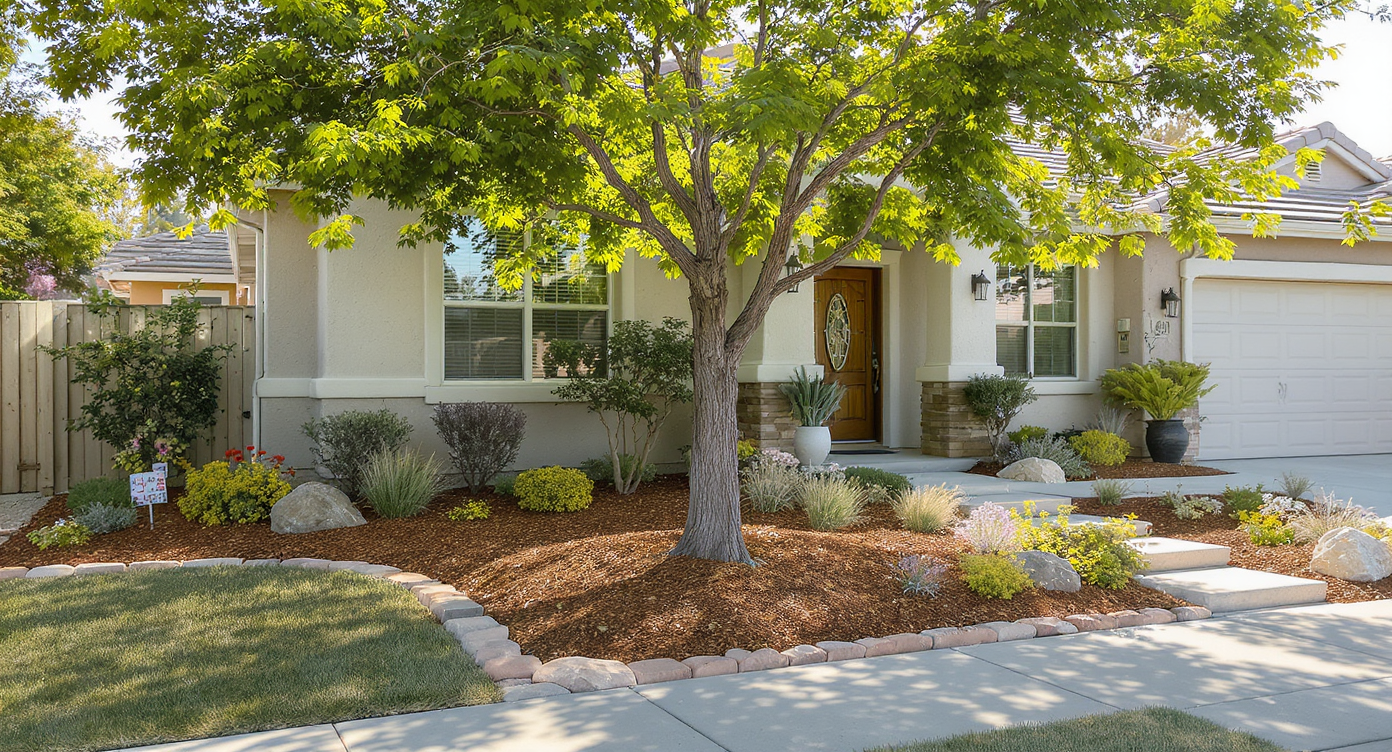
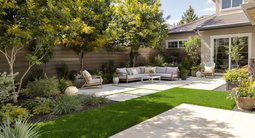
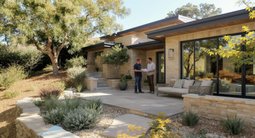



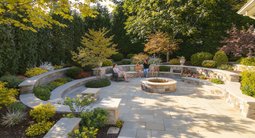


.png)